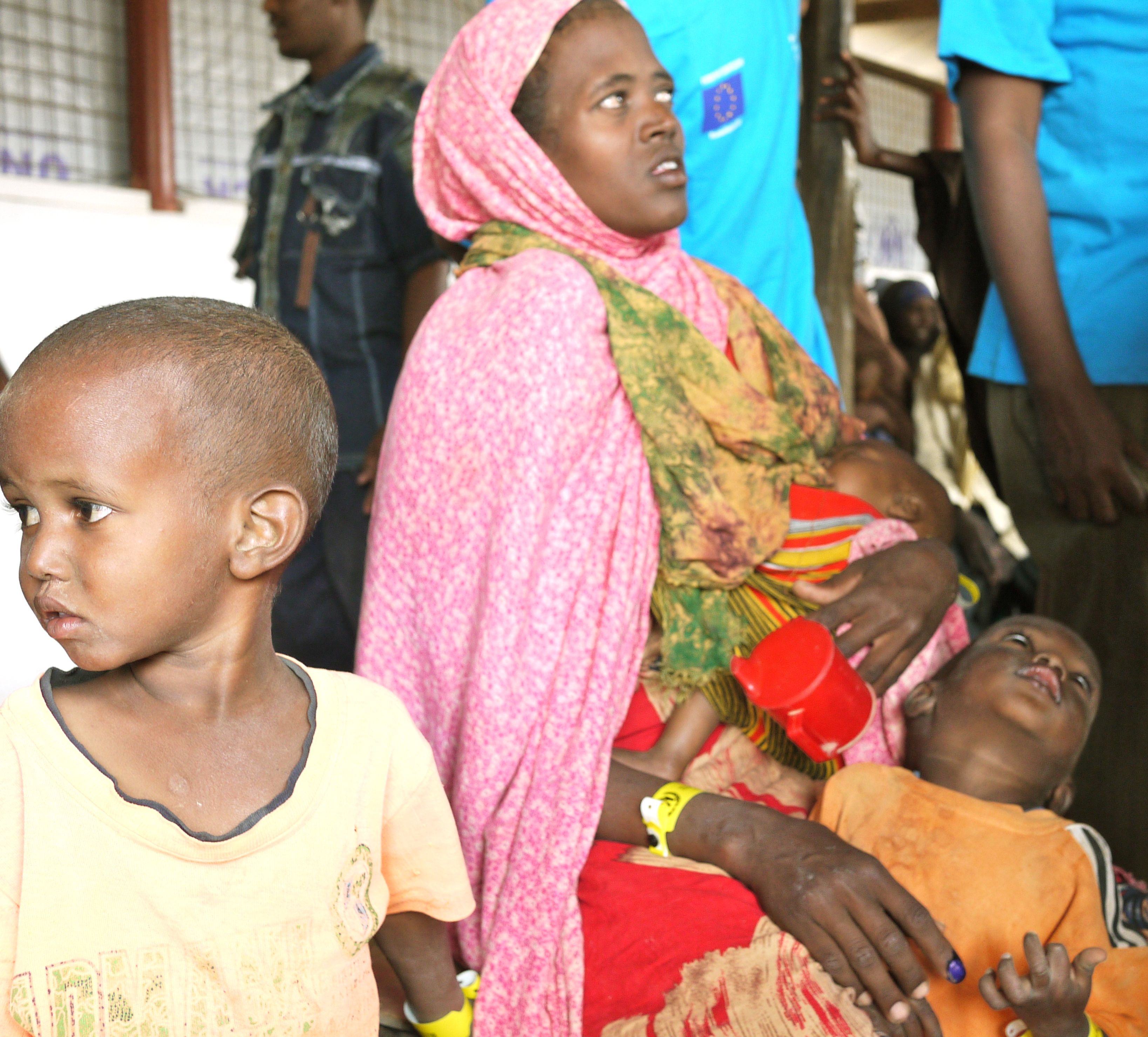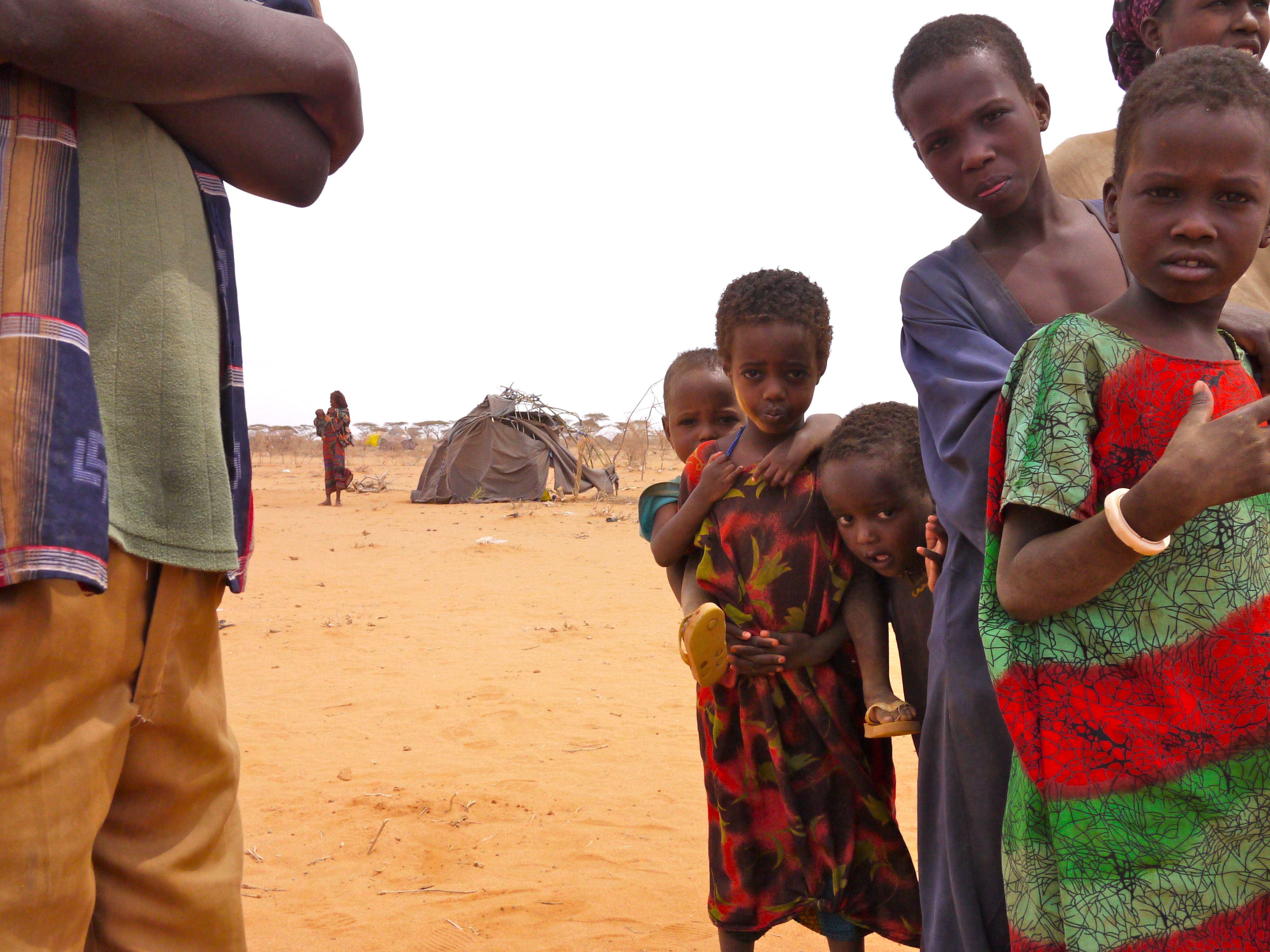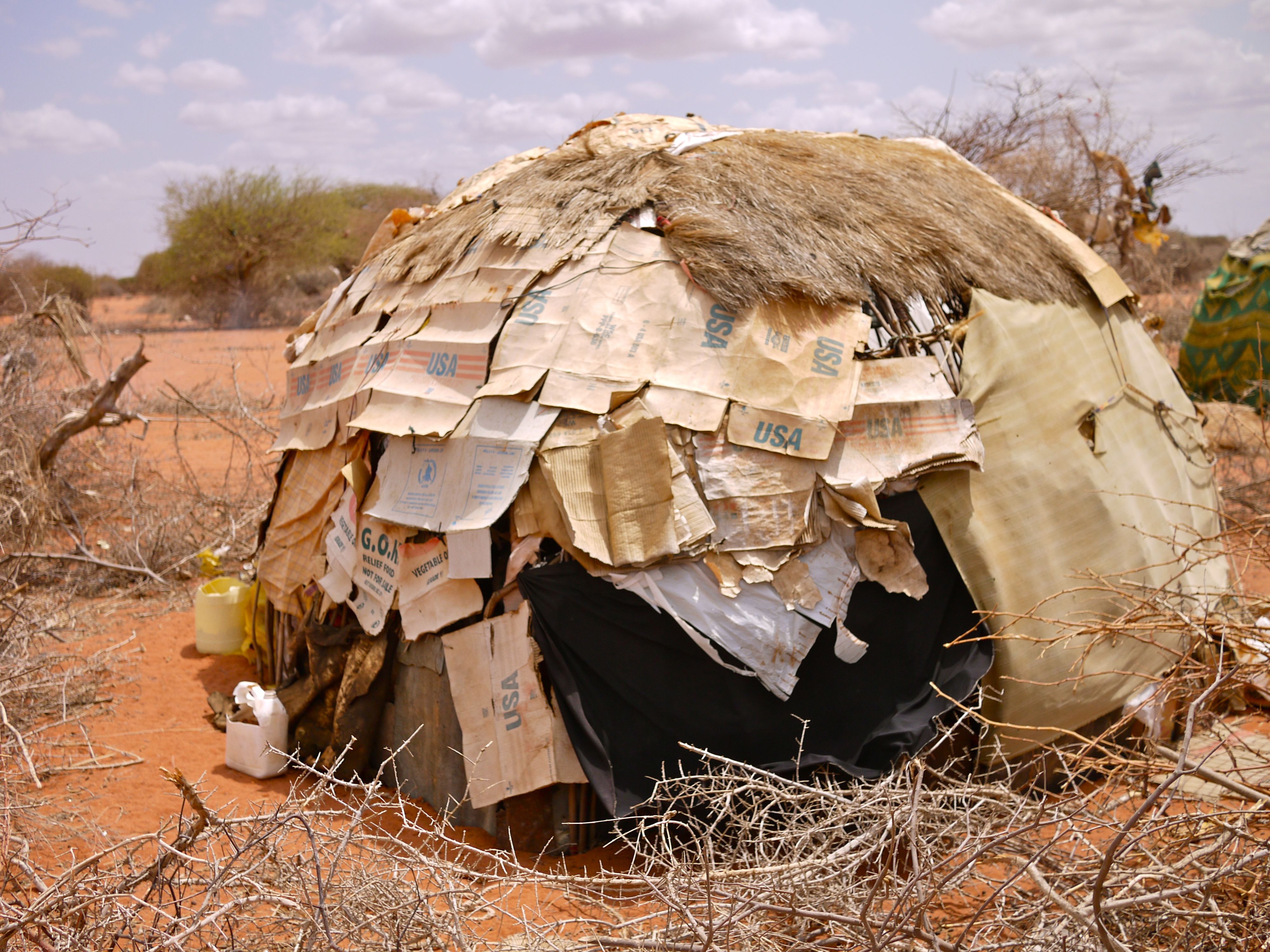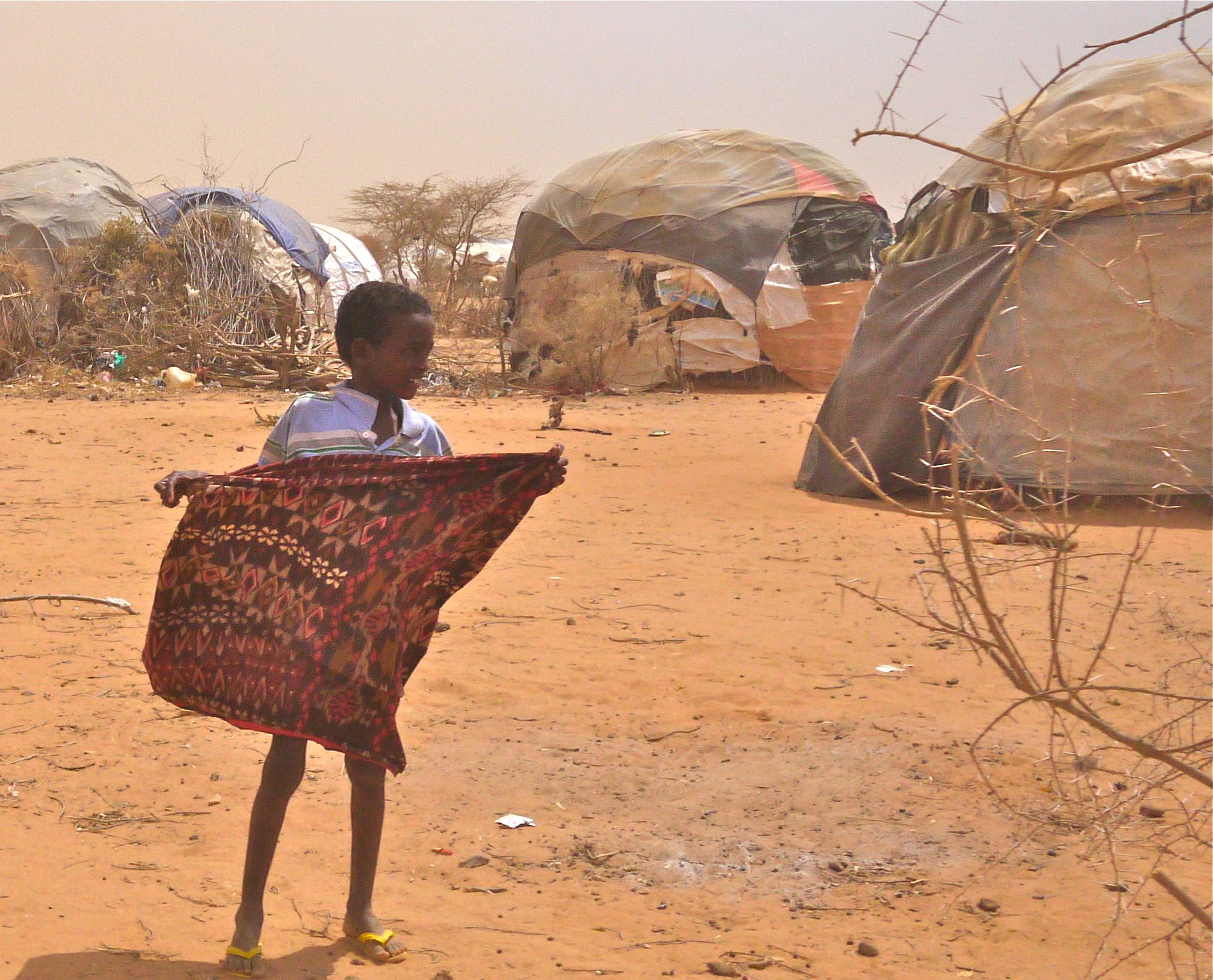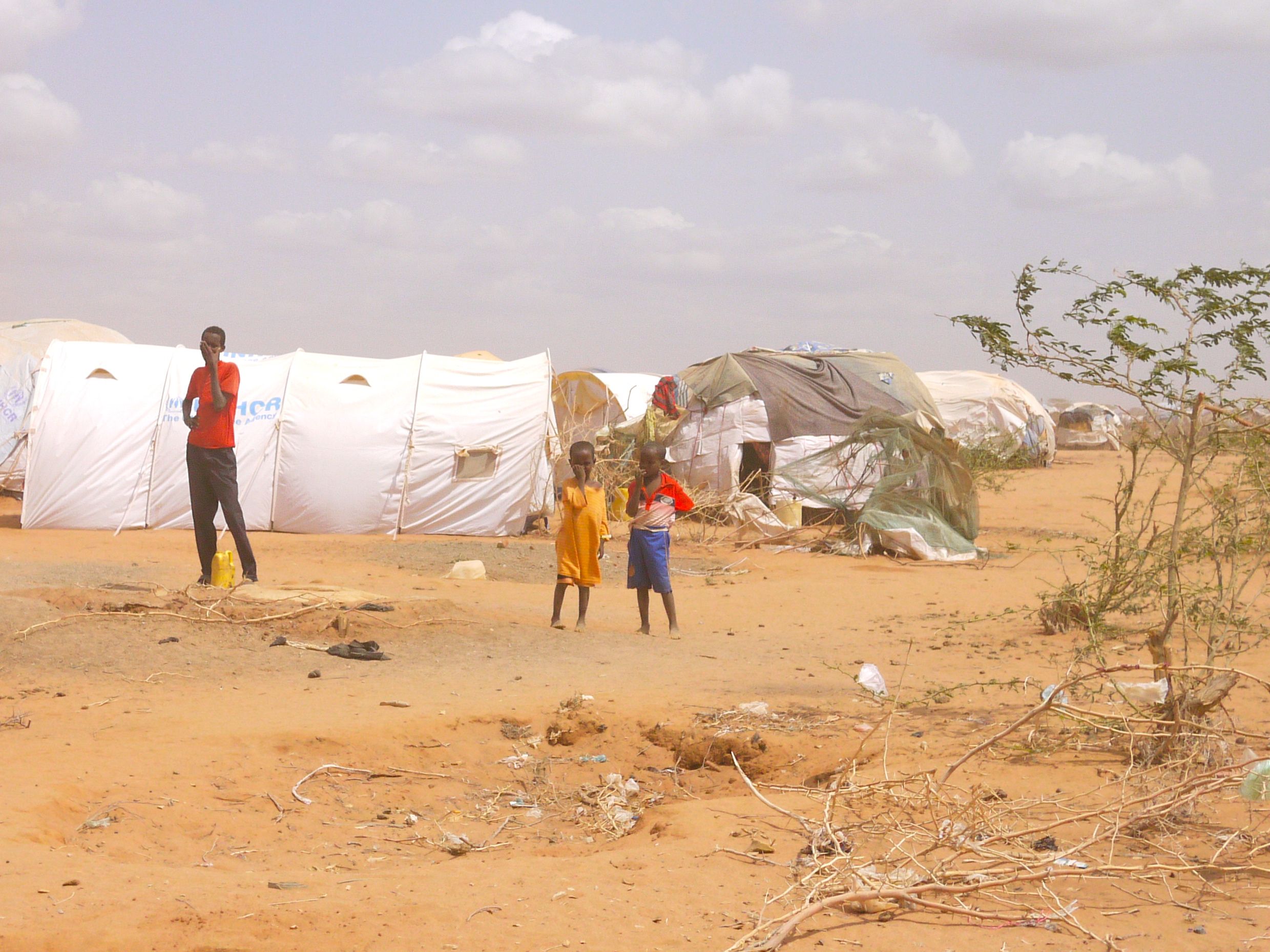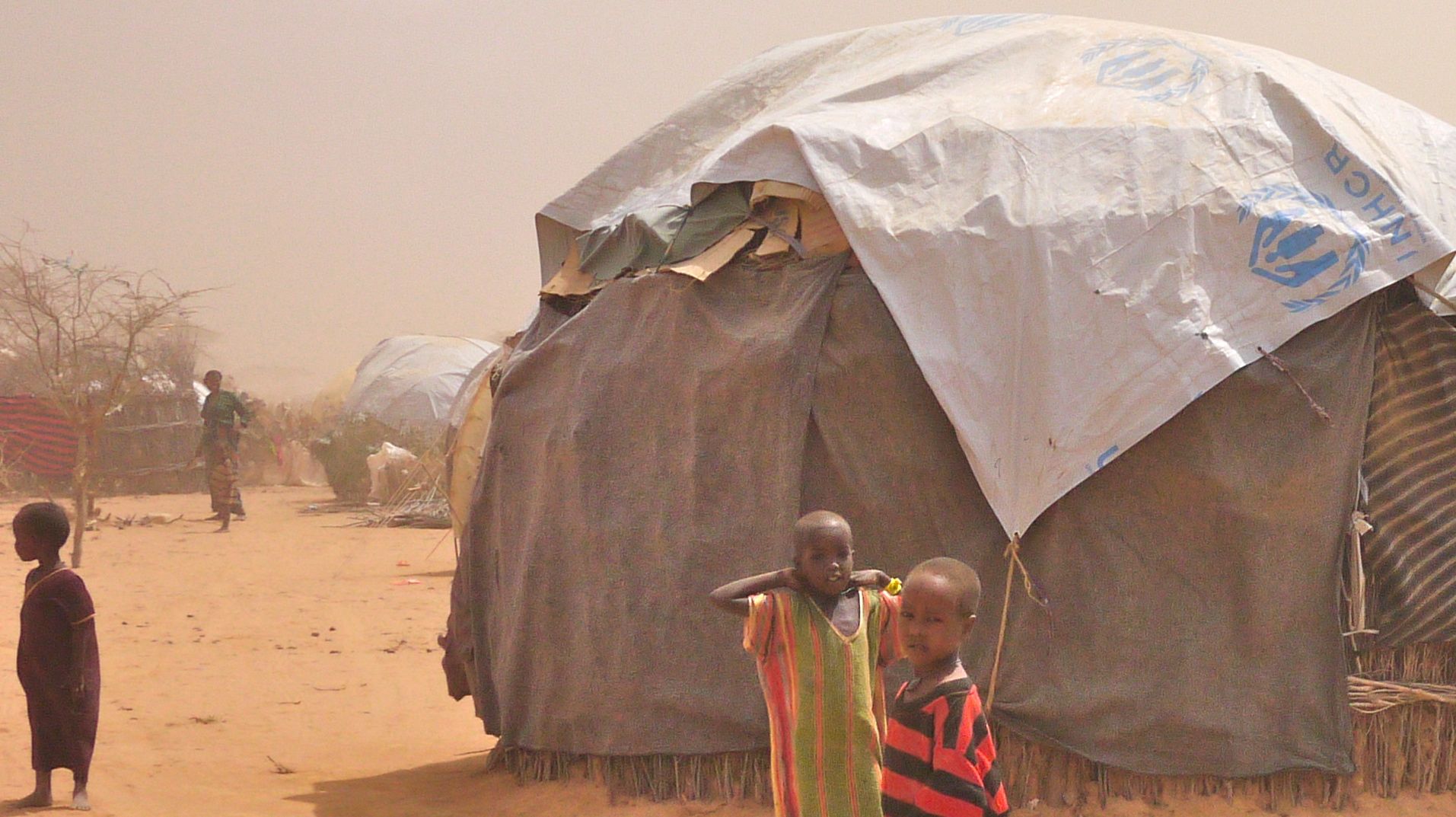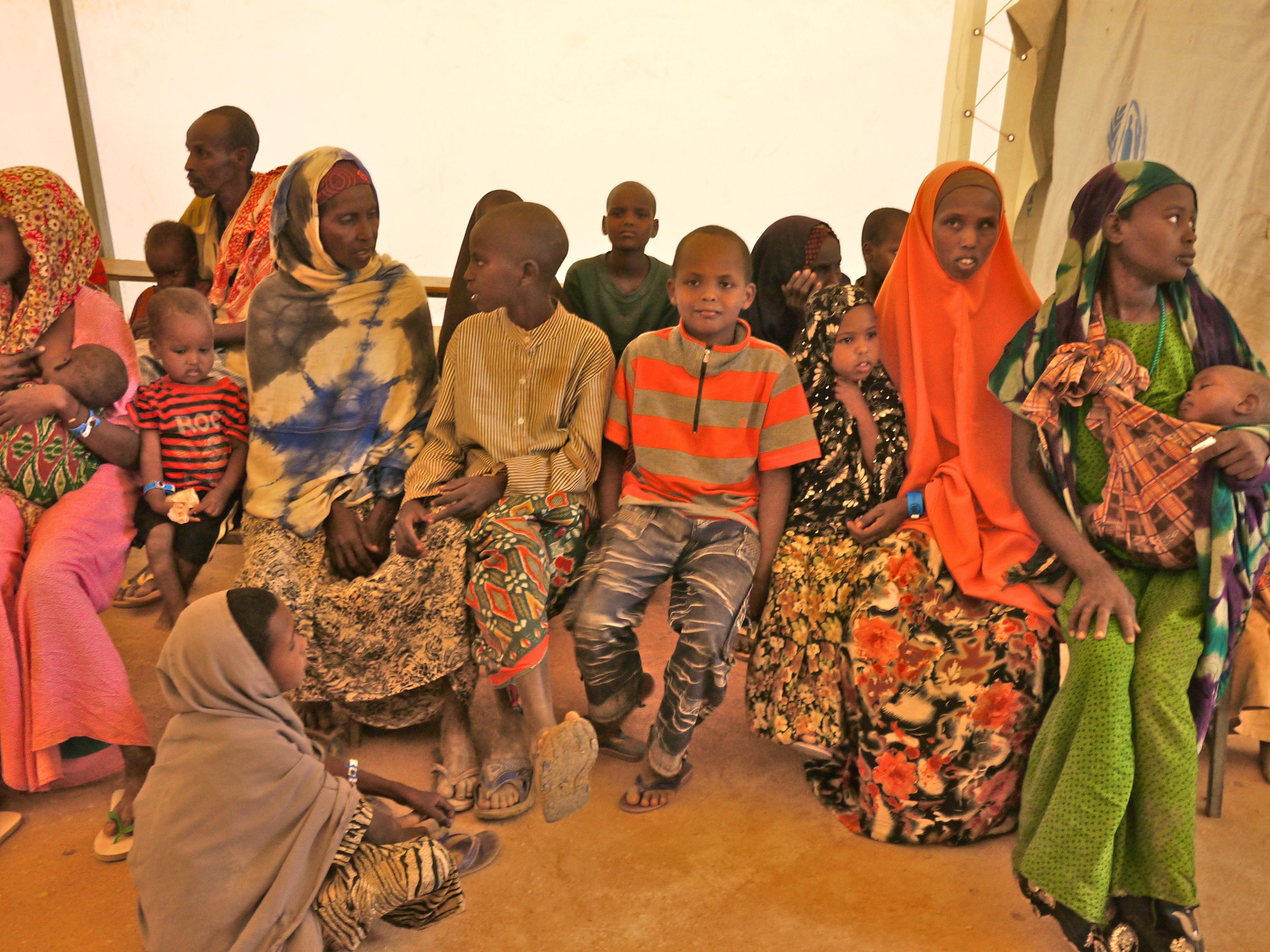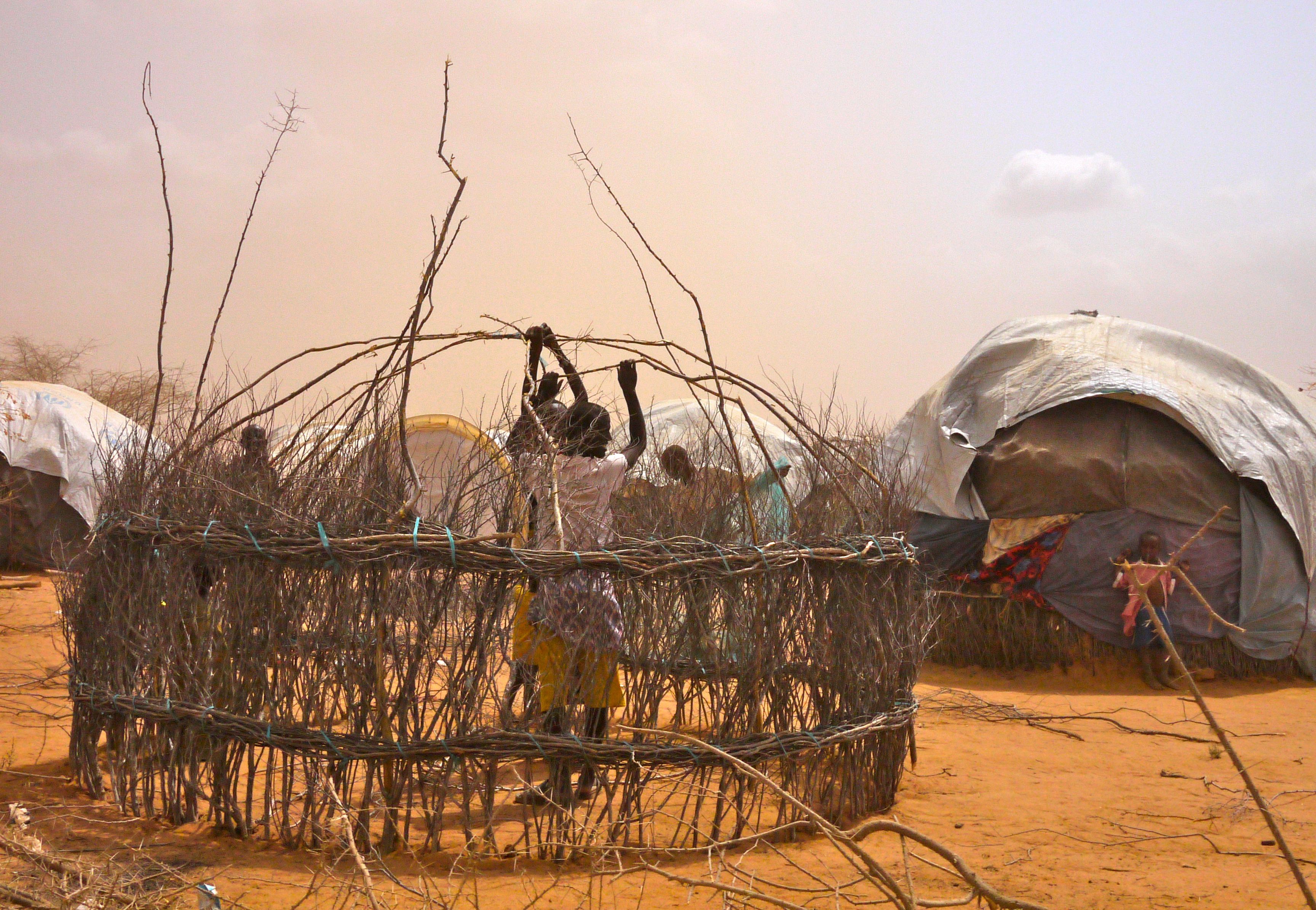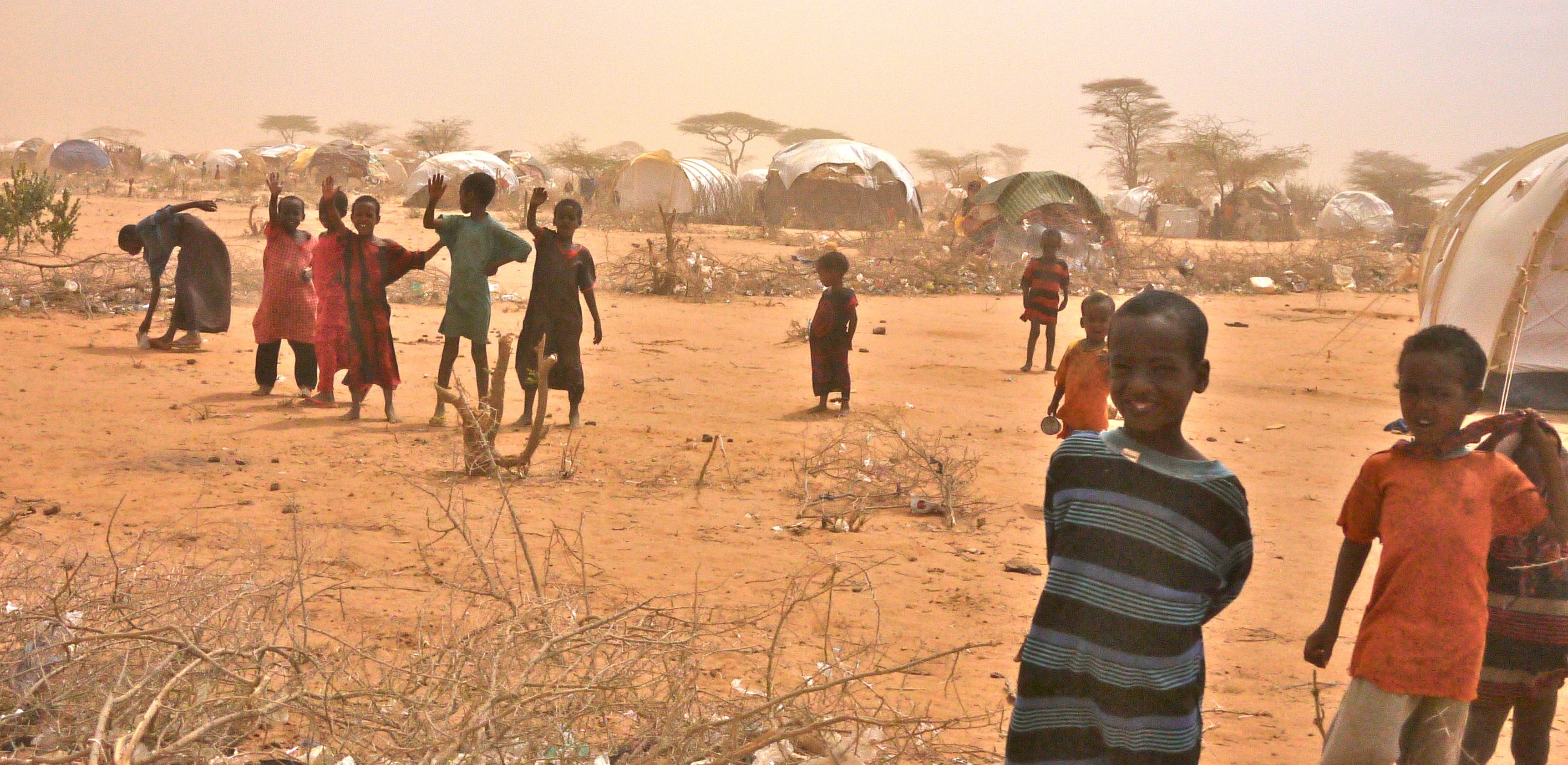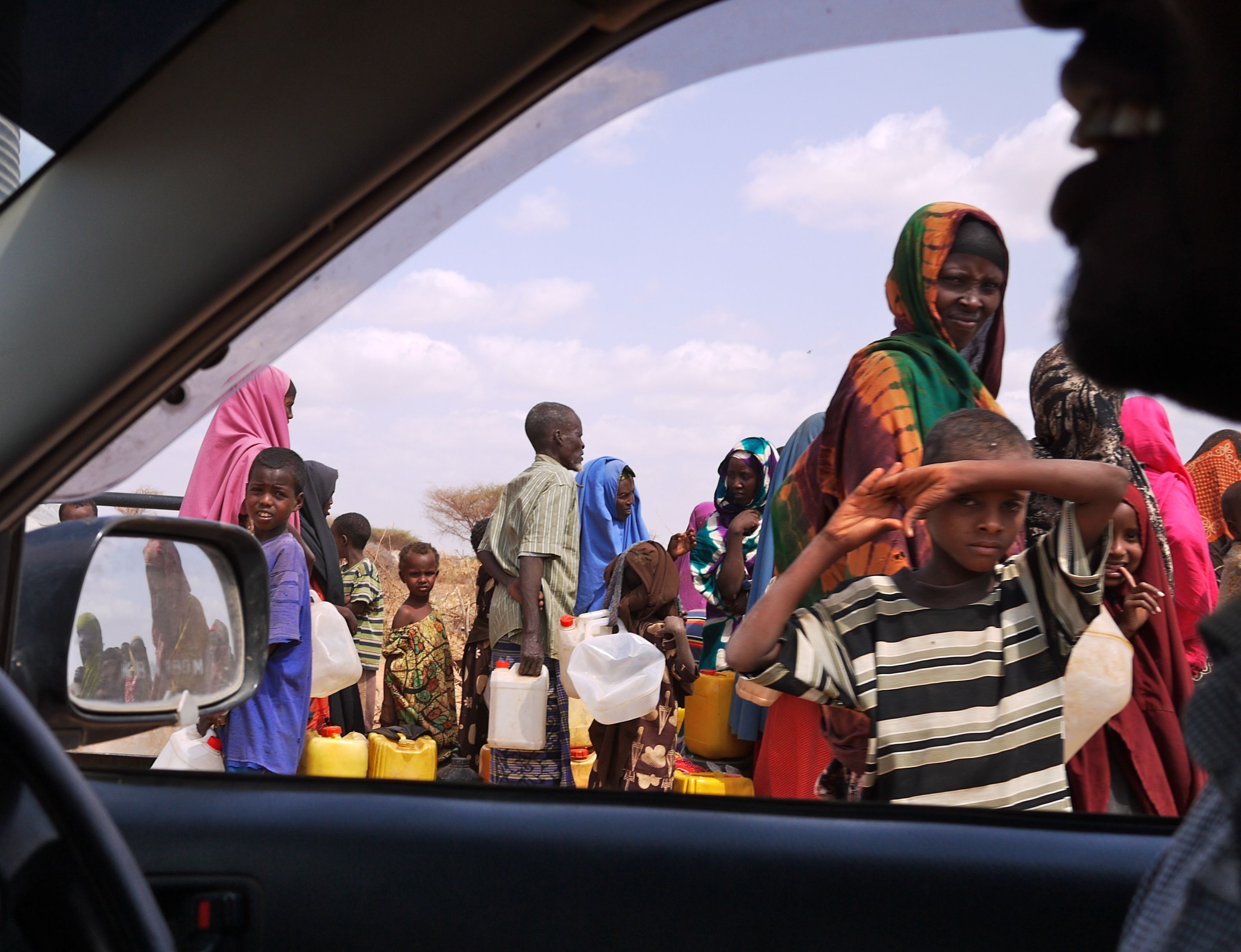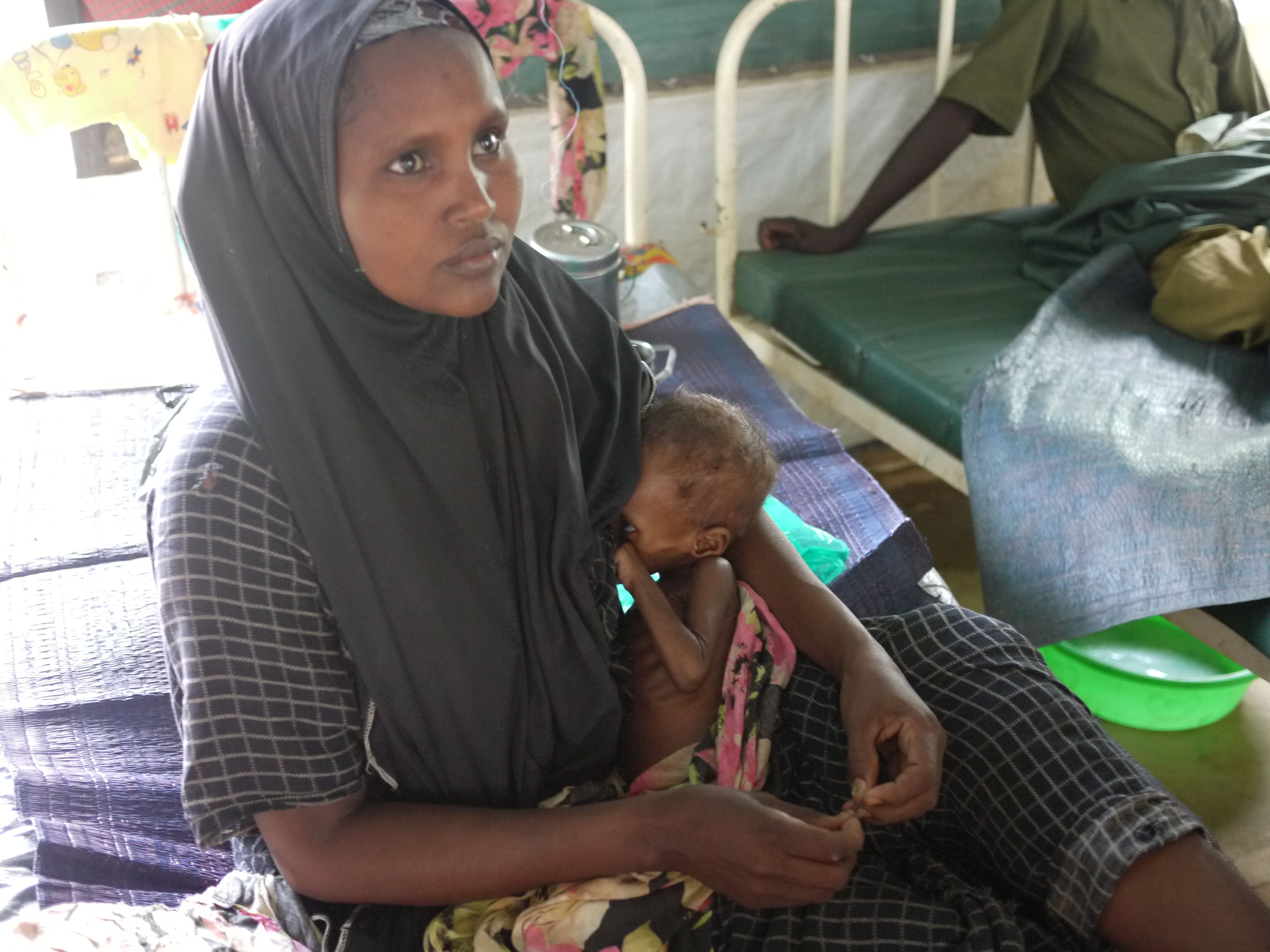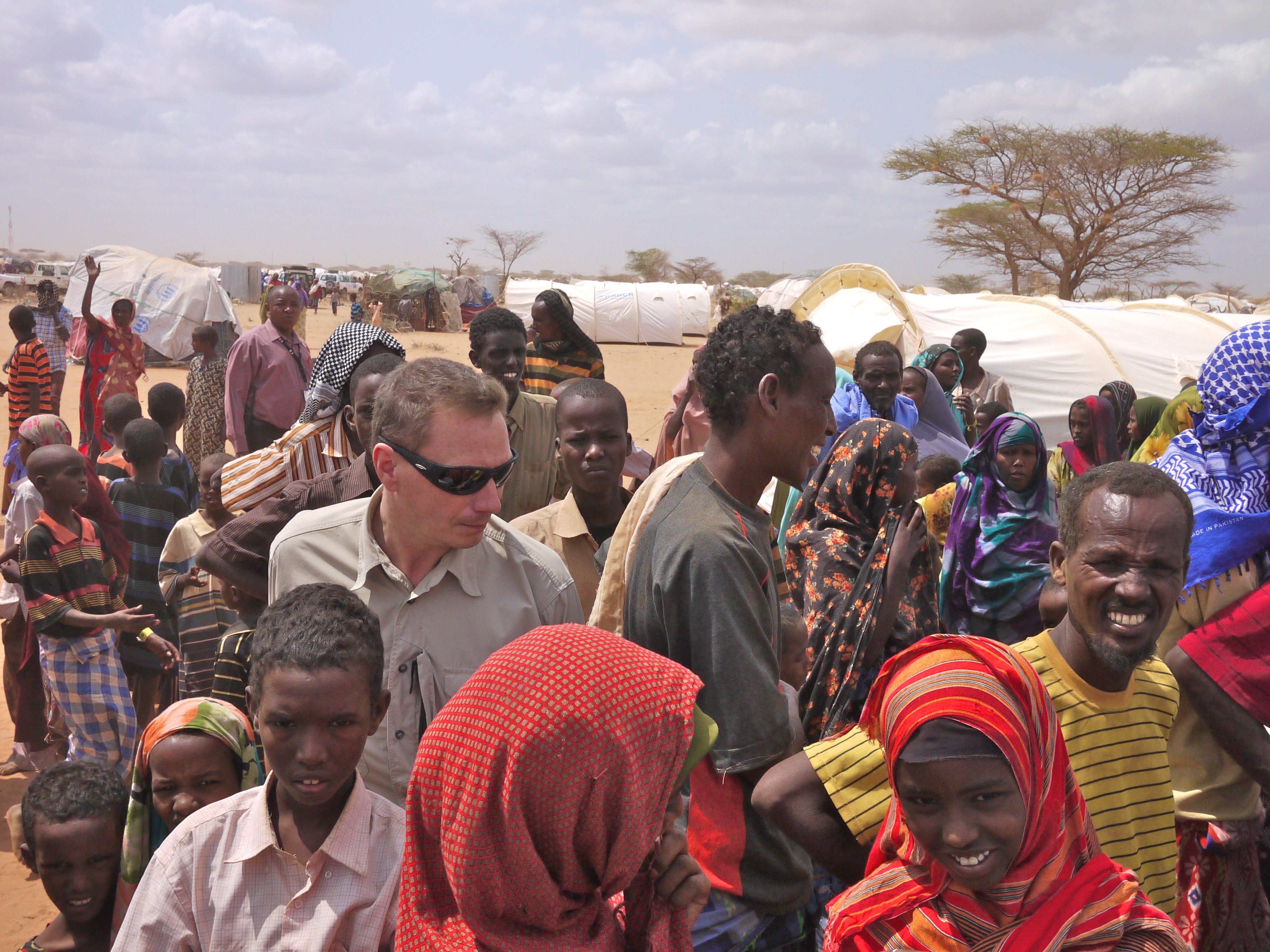The famine in Somalia that has sent a tide of refugees into the Dadaab refugee camps in Kenya has recently drawn international attention, but in fact the problem has been building for years, and reached a critical point months ago. Concerns about the current drought began last year.
The “current humanitarian response is inadequate to meet emergency needs” according to an August 4 report by the U.S. government’s famine alert agency, FEWSNET, which said that famine conditions are expected to spread throughout southern Somalia in the coming month. A total of 3.7 million people are currently considered to be food insecure, and most of these are in need of “immediate, lifesaving assistance.” More than 390,000 children are estimated to be malnourished, almost half of them severely.
Samuel Loewenberg reported from the outskirts of Dadaab, where an estimated 70,000 newly arrived refugees have set up makeshift housing, as the official camps have been closed off to new arrivals since 2008 due to overcrowding.




